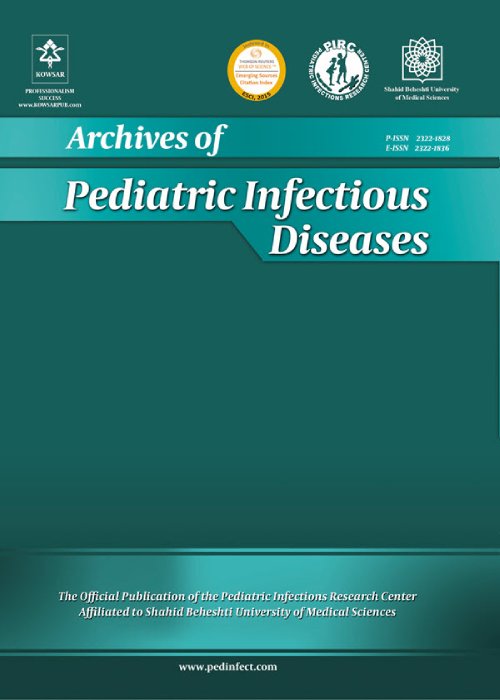Comparison of the Detection Limits of the Culture and PCR Methods for the Detection of Clostridium difficile, Clostridium perfringens, Campylobacter jejuni, and Yersinia enterocolitica in Human Stool
Author(s):
Abstract:
Background
Detection of fastidious enteropathogenic bacteria in fecal samples of patients with gastroenteritis is a challenge in clinical microbiological laboratories.Objectives
The aim of this study was to compare the detection limits of the PCR and culture methods for the diagnosis of Campylobacter spp., Yersinia spp., Clostridium perfringens, and Clostridium difficile in human stool samples.Methods
Healthy human stool and sterile phosphate-buffered saline (PBS) samples were separately spiked with 10-fold dilutions of C. jejuni, C. difficile, Y. enterocolitica, and C. perfringens reference strains to obtain final concentrations of 101 - 108 colony forming units (CFU) per gram. Dilutions of each suspension were inoculated onto specific culture media and colony counts were determined. Polymerase chain reaction (PCR) was carried out on DNA extracts of each dilution using specific primers. All of the assays were performed in two separate replicas.Results
In the cases of the culture and PCR assays, detection limits of 101 and 102 CFU/g for C. difficile, 2 × 104 and 2 × 104 CFU/g for C. perfringens, 104 and 102 CFU/g for C. jejuni, and 102 and 104 CFU/g for Y. enterocolitica, respectively, were obtained. In the cases of the spiked PBS samples, a detection limit of 101 for C. jejuni and Y. enterocolitica was obtained using the culture method. While 102 -fold higher sensitivity was observed for C. jejuni via PCR compared with the culture assay, equal (C. perfringens) or lower sensitivity limits (C. difficile and Y. enterocolitica) were detected for the spiked stool samples with other bacteria.Conclusions
These results showed differences in the bacterial culture and PCR methods for quantitative detection of fastidious bacteria in human stool samples. However, a bacterial load of 104 CFU per gram of stool was measured as a sufficient amount for detection of the fastidious bacteria by either culture or PCR assays. More suitable PCR methods could be used for rapid diagnosis of the slow-growing bacteria in the patients stool samples.Keywords:
Language:
English
Published:
Archives of Pediatric Infectious Diseases, Volume:5 Issue: 1, Jan 2017
Page:
7
magiran.com/p1638096
دانلود و مطالعه متن این مقاله با یکی از روشهای زیر امکان پذیر است:
اشتراک شخصی
با عضویت و پرداخت آنلاین حق اشتراک یکساله به مبلغ 1,390,000ريال میتوانید 70 عنوان مطلب دانلود کنید!
اشتراک سازمانی
به کتابخانه دانشگاه یا محل کار خود پیشنهاد کنید تا اشتراک سازمانی این پایگاه را برای دسترسی نامحدود همه کاربران به متن مطالب تهیه نمایند!
توجه!
- حق عضویت دریافتی صرف حمایت از نشریات عضو و نگهداری، تکمیل و توسعه مگیران میشود.
- پرداخت حق اشتراک و دانلود مقالات اجازه بازنشر آن در سایر رسانههای چاپی و دیجیتال را به کاربر نمیدهد.
In order to view content subscription is required
Personal subscription
Subscribe magiran.com for 70 € euros via PayPal and download 70 articles during a year.
Organization subscription
Please contact us to subscribe your university or library for unlimited access!


